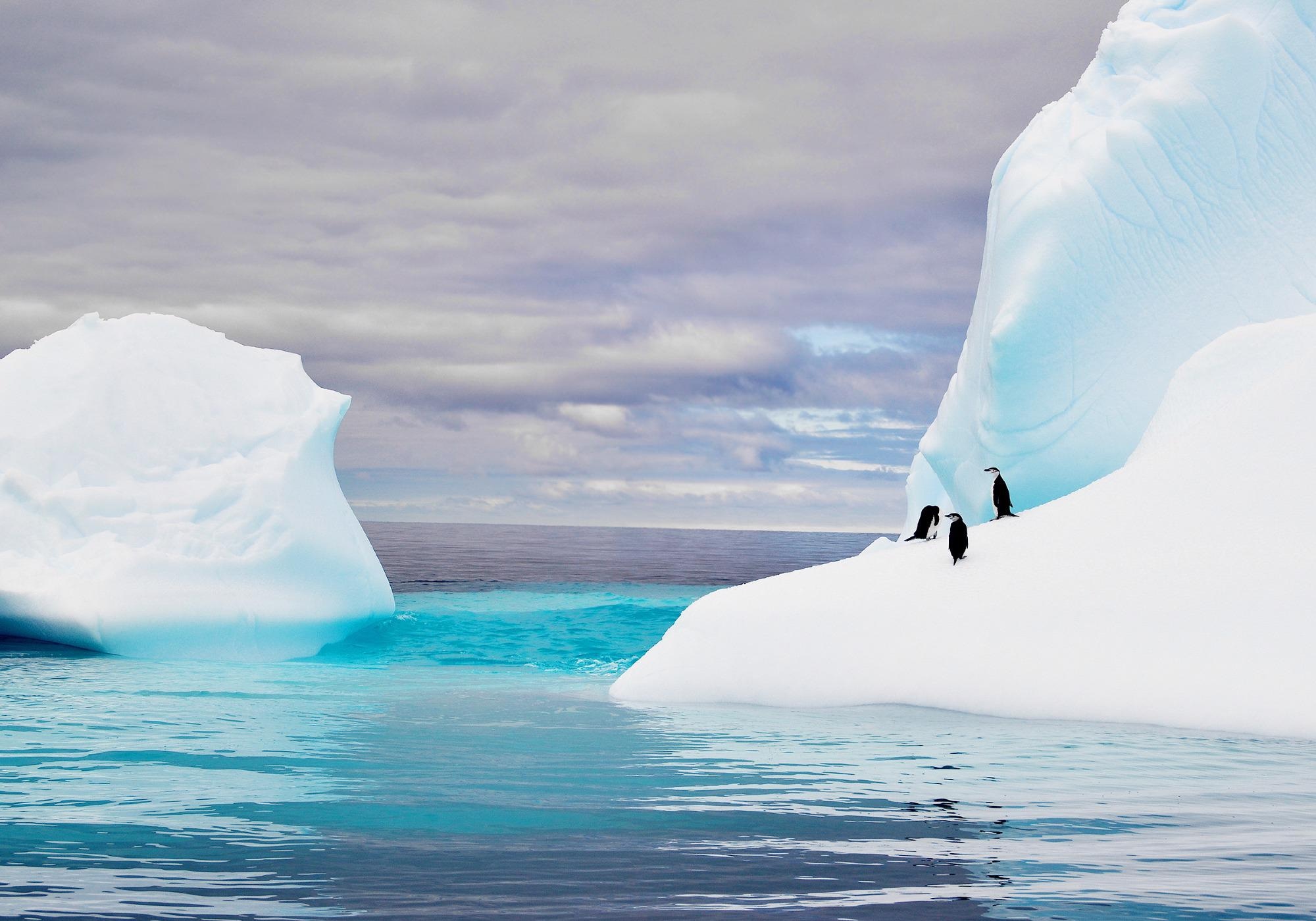
Image Credit: Shutterstock / 2j architecture
A 4000 square-kilometer iceberg has been cleaved from the Ronne Ice Shelf, making it the largest current iceberg.
The Weddell Sea, part of the Southern Ocean, is already home to some pretty impressively sized icebergs, and a new berg that has separated from the Ronne Ice Shelf has just snatched the record for the largest extant iceberg.
The gigantic iceberg, dubbed A-76, is 4,320 square kilometers large and was spotted by the British Antarctic Survey — a project that is one of the world’s leading polar science operations¹.
This initial observation was backed up by space-based images taken by the European Space Agency’s (ESA) Copernicus Sentinel-1 mission² — consisting of two orbiting satellites that allow for year-round around-the-clock observations of Antarctica.
An Iceberg Larger than New York City
The A-76 iceberg is roughly finger-shaped and is 105 miles long and 15 miles wide. It is now freely floating in the Weddell Sea, a large bay in the western Antarctic, which became infamous when world-renown explorer Ernest Shackleton lost his ship, the Endurance, to pack ice in the region.
A-76 snatches the title of ‘world’s largest iceberg’ from A-23A, which also floats in the Weddell Sea. This triangular wedge of ice — which measures around 3880 square kilometers. It joins the much smaller but still impressive A-74 iceberg, which was spotted in February of this year after it broke free of the Brunt Ice Shelf.
To put the size of A-76 into context, the iceberg is about four times the size of New York and larger than most European cities. It is also larger than the entire island of Mallorca — the most famous of Spain’s Balearic Islands — which is just 3640 km² in size.
Before A-23A the world record holder was A-68A, around 4200 square kilometers before it broke apart earlier this year.
Despite their impressive size, these icebergs are all still somewhat smaller than the largest iceberg ever recorded found in the Southern Ocean by the USS Glacier in 1956, which was reported to be 31,000 square kilometers.
But, what is concerning is the frequency with which these large icebergs are now breaking free of ice shelves.
“A76 and A74 are both just part of natural cycles on ice shelves that hadn’t calved anything big for decades,” said Laura Gerrish, a researcher at the British Antarctic Survey, on Twitter. “It’s important to monitor the frequency of all iceberg calving, but these are all expected for now.”
The freeing of A-76 is a stark reminder that temperatures are rising faster in the continent of Antarctica than in any region of the planet.
An Indirect Impact on Sea Levels
The breaking away of this huge mountain of ice will not directly impact sea levels as the ice-shelf from which it originates is already floating in the water. Despite this, events of this kind do have an indirect on rising sea levels. As ice selves assist in slowing the flow of water from glaciers and ice shelves to the sea, losing part of an ice shelf will eventually cause sea levels to rise, says the National Snow and Ice Data Center (NSIDC).
The NSDIC also estimates that there is a sufficient amount of frozen water in Antarctica to raise sea levels across the Earth by around 60 meters if its Ice Sheet was to melt¹. In contrast, should the Greenland Ice Sheet melt, the resultant water would raise sea levels by just a tenth of that.
It remains to be seen what will become of the A-76 iceberg. It could possibly share the same fate as another recent titanic iceberg, A-68A, which was a similar size to A-76.
A-68A was a titanic iceberg that broke off the Larsen-C Ice Shelf in 2017. It was monitored by satellite as it drifted dangerously close to the South Atlantic island of South Georgia.
An impact with the iceberg could have seriously affected the island’s wildlife as a similar event — the grounding of A-38 — did in 2004. Fortunately, A-68A broke apart before it reached the remote island and impacted its fragile ecosystem.
The Copernicus mission will now track the progress of A-76 in the same way that it did A-68A.
References
1. Polar science for planet earth, the British Antarctic Survey, [https://www.bas.ac.uk/]
2. Sentinel-1, ESA, [https://sentinel.esa.int/web/sentinel/missions/sentinel-1]
3. Quick Facts on Ice Sheets, the National Snow and Ice Data Center (NSIDC), [https://nsidc.org/cryosphere/quickfacts/icesheets.html]
Disclaimer: The views expressed here are those of the author expressed in their private capacity and do not necessarily represent the views of AZoM.com Limited T/A AZoNetwork the owner and operator of this website. This disclaimer forms part of the Terms and conditions of use of this website.